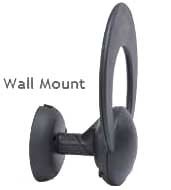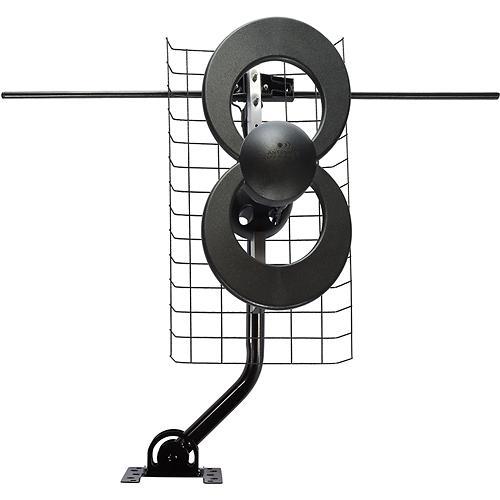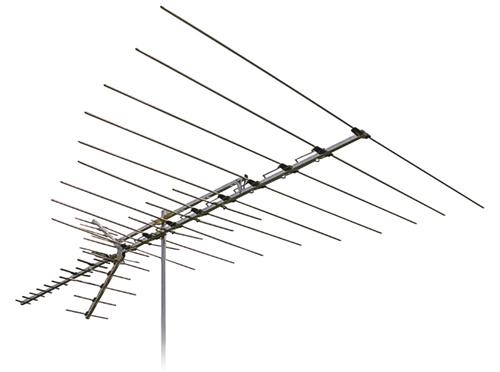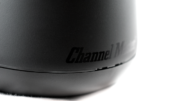Take a look at this antenna. There’s a lot going on here. There are wires and poles and things going off in multiple directions. When you compare it to other antennas like this one:

it looks, well, sort of overdone, right?
There’s a reason some antennas look very complex. They’re designed to do what simpler antennas can’t.
Is it one antenna, or many?
The most complex antennas have over 60 “elements.” Some are designed to receive signal, others to focus the signal on another part of the antenna. Even the simplest antenna designed for UHF/VHF use is really a mix of several antennas working together to do the same thing.
Driven elements
Driven elements are the part of the antenna that actually pick up the signal. As a general rule, the more you have, the better. UHF antennas can usually make do with just one driven element. This is because UHF radio waves are smaller. A single loop or X shape can do a good job of picking them all up. However, as your channel numbers get lower, the waves get bigger. A lot bigger. Bigger waves need bigger antennas to receive them. A VHF antenna really wants to have a separate driven element for every channel in order to work really well. You can use fewer elements, but if you want the most signal possible you want the most antennas possible.
An antenna that has multiple driven elements is called a log periodic antenna, although some people incorrectly call it a yagi antenna. I won’t judge.
Reflectors
Reflectors sit on the back of an antenna and point the signal back to the driven elements. In this way, the back of the element is used as well as the front. This makes the element about twice as effective.
Reflectors act like mirrors, but they don’t have to be solid like mirrors. Just a few bars of metal works just fine. However, that does tend to add to the clutter on the antenna.
Usually, reflectors are used on UHF antennas or the part of UHF/VHF antennas that has a UHF driven element.
Directors
Directors sit at the front of an antenna. They focus the signal toward the front of the driven elements. They act like magnifying glasses, focusing all the signal that comes in.
Directors work well with either UHF or VHF antennas, but they have the effect of making an antenna very long because the more directors you have lined up, the better the antenna works.
All the other stuff
Adding to the bulk of the antenna are booms, which hold directors and driven elements. There are also wires connecting driven elements, plus the balun which changes the signal so it can go down a coaxial cable. Put it all together and you can have a very complex system.
So, how come some antennas are so simple?

Some antennas are as simple as they come. Or at least, they want you to think they are. The antenna above is a UHF-only antenna, meaning that it doesn’t pick up VHF and therefore needs only one driven element. The other parts are hidden in the plastic housing. If you take this very same antenna, give it slightly improved UHF performance, add a reflector and a VHF element (hey, one is better than none) it begins to look pretty busy:

Looking for an antenna?
If you’re looking for a new TV antenna, whether you want one that looks sleek or busy you’ll find the best selection, including all the free tech support you’ll want, by going to SolidSignal





